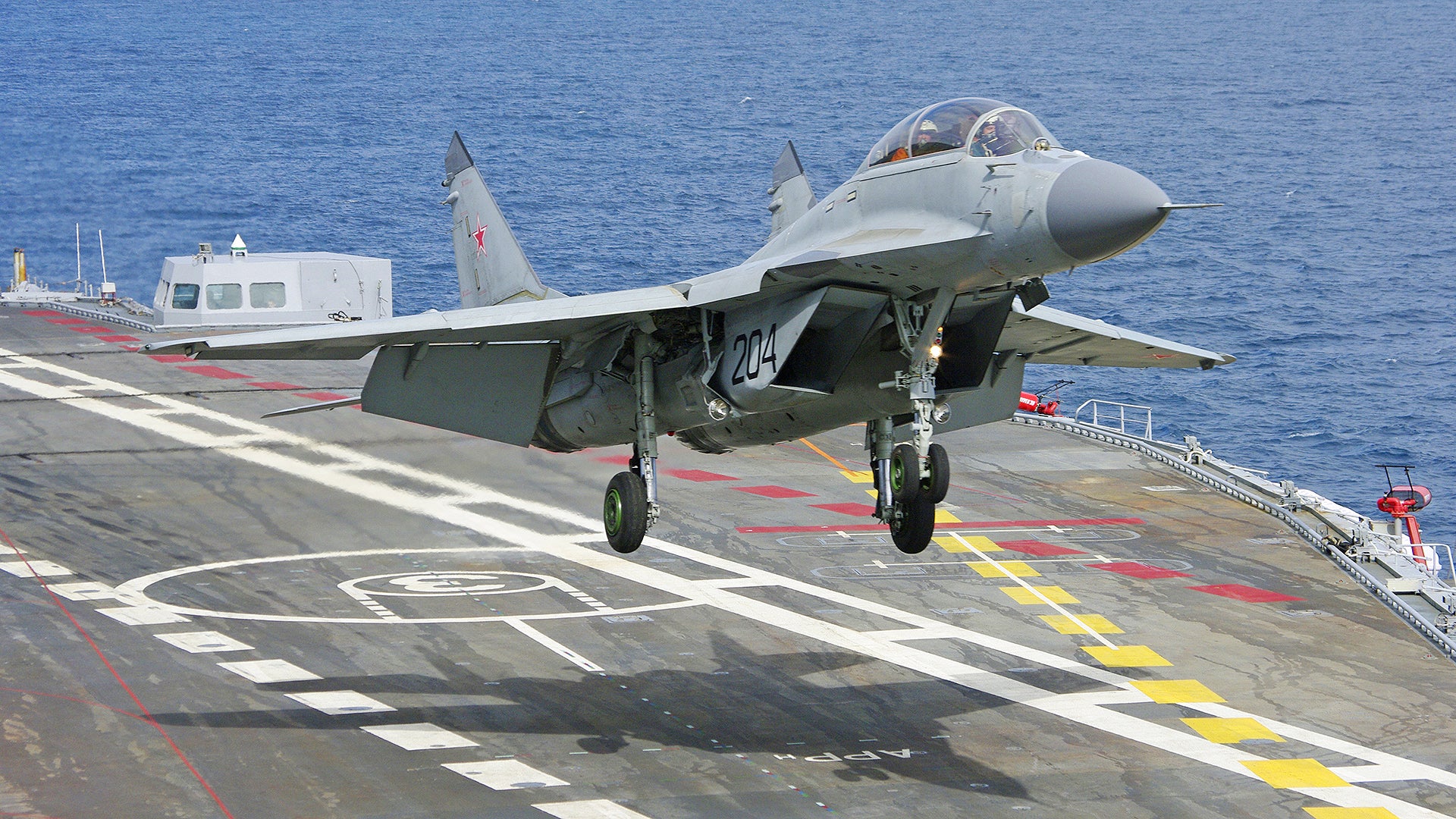The embarrassing crash of one of just four new MiG-29KR multi-role naval fighters deployed aboard the Admiral Kuznetsov earlier this month is being blamed on a series of events that occurred on the Russian carrier’s deck and the doomed jet’s loss of all engine power that followed.
According to USNI News who quotes russian media statements, a three-ship reconnaissance and familiarity flight over Aleppo was coming to an end and the jets were in the process of landing aboard the carrier when things began to unravel. The first jet landed safely, while the second landed minutes later, when its hook snapped one of the ship’s cross-deck arresting cables. This can be a very deadly situation for naval aviators and deck hands alike, regardless of their nation of origin.
Luckily, the second MiG still caught the next wire as it rolled across the deck. At that point a fouled deck was called and the third and final navalized Fulcrum was told to waveoff and to enter a holding pattern above the ship while the landing area was restored to operational status.
USNI News writes:
“While in the holding area, both of the fighter’s engines shut down,” read the translation. “A preliminary explanation is that they were no longer receiving fuel. ln such situations, a fighter falls like a rock, and the pilot has only one option — to eject.”
It sounds like the third MiG simply ran out of gas, a totally unnecessary loss considering Russia’s master air base near the central Syrian coast and airfields in Cyprus would have been at max just 50 miles away.
Barring the possibility of a double catastrophic engine failure, which seems very unlikely especially considering the phase of the MiG’s flight at the time of the loss and the circumstances at hand, if anything this event highlights the precarious state of Russian naval aviation and the limitation of its carrier and air wing. It seems that no recovery tanker was available to provide gas to the holding MiG-29KR, nor was there standing operating procedures in place dictating that fighter with such a low fuel-state must divert to a nearby airfield.
In other words, if these reports are accurate this seems to have been an unnecessary and glaringly stupid loss, one that appears to be the result of planning that had almost no margin for the unexpected. That is a ballsy and reckless move considering how challenging the carrier flight environment is and how little actual training these crews have in that environment. Shortly following news of the crash The War Zone stated:
“Russia’s training program for its limited carrier flight operations has also long been a concern. With only one aircraft carrier (which sometimes goes for years without sailing) and a small handful of fighters capable of operating from the ship, the Russian Navy’s ability to retain a critical mass of experienced pilots qualified to operate in the dangerous shipboard environment is questionable.”
Luckily, in this case the pilot ejected and was recovered safely, and the only loss was one of Russia’s newest and most advanced fighters. But next time this may not be the case.
The Kuznetsov did not stand down from flight operations following the crash, although its remaining inventory of just three MiG-29KRs, the most advanced aircraft it carries, have not been seen flying. Instead all new footage has showed Russia’s slightly upgraded but still relatively dated Su-33s carrying out counter-air and dumb bombing sorties.
Contact the author: Tyler@thedrive.com

